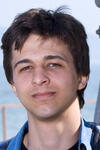Stefan Krastanov
Postdoctoral Associate
TBD
Education:
Ph.D. 2019, Yale University (Pending)
Advisor:
Liang Jiang
Dissertation Title:
New Approaches to Control, Calibration, and Optimization of Quantum Hardware
Dissertation Abstract:
In this dissertation I present a number of techniques that form building blocks for the quantum manipulations spanning various levels of the quantum technology stack. We begin at the very bottom, with techniques for the universal control of a quantum harmonic oscillators. Oscillators like microwave and optical cavities are among some of the more promising physical systems on top of which to implement quantum logic. However, most of our technology until recently has been focused on manipulating pseudo-classical states of light, restricted to operations that preserve the Gaussian profile of the quantum states. Much more general unitary operations are necessary to unlock the computation power of quantum mechanics and we will see a number of protocols enabling such operations.
However, the precise control and evaluation of the hardware requires a well calibrated model of the dynamical laws governing it. Methods like state and process tomography permit such calibration in principle, but they require a very large number of measurements and dealing with the noise inherent to the hardware makes them fragile. Instead of these methods, we will see how tools borrowed from compressed sensing and machine learning provide for cheaper, more robust, and higher fidelity calibration procedure.
Going one step higher the technology stack, we need to use these control techniques to actually prepare non-classical resources for use in quantum computation. One of the most ubiquitous such resource is quantum entanglement. We will see how one can optimize the entanglement distillation circuits for the error model of the actual hardware. The optimized circuits perform substantially better than a general distillation circuit by virtue of being optimized for the particularities of the hardware – this way the results from the previously discussed calibration procedure inform the design of upper layers of the technology stack.
We can continue this optimization journey at still higher layers of the stack. On top of the physical qubits we have created we still need to implement an error correcting code that can asymptotically suppress errors. We will study a black-box decoder for such codes, based on a neural network architecture, that permits us to work with advanced codes for which individual decoders have not been designed yet. This enables us to both optimize the decoder for the particular hardware and even optimize the code structure itself, without worrying that the new code will be difficult to decode.
